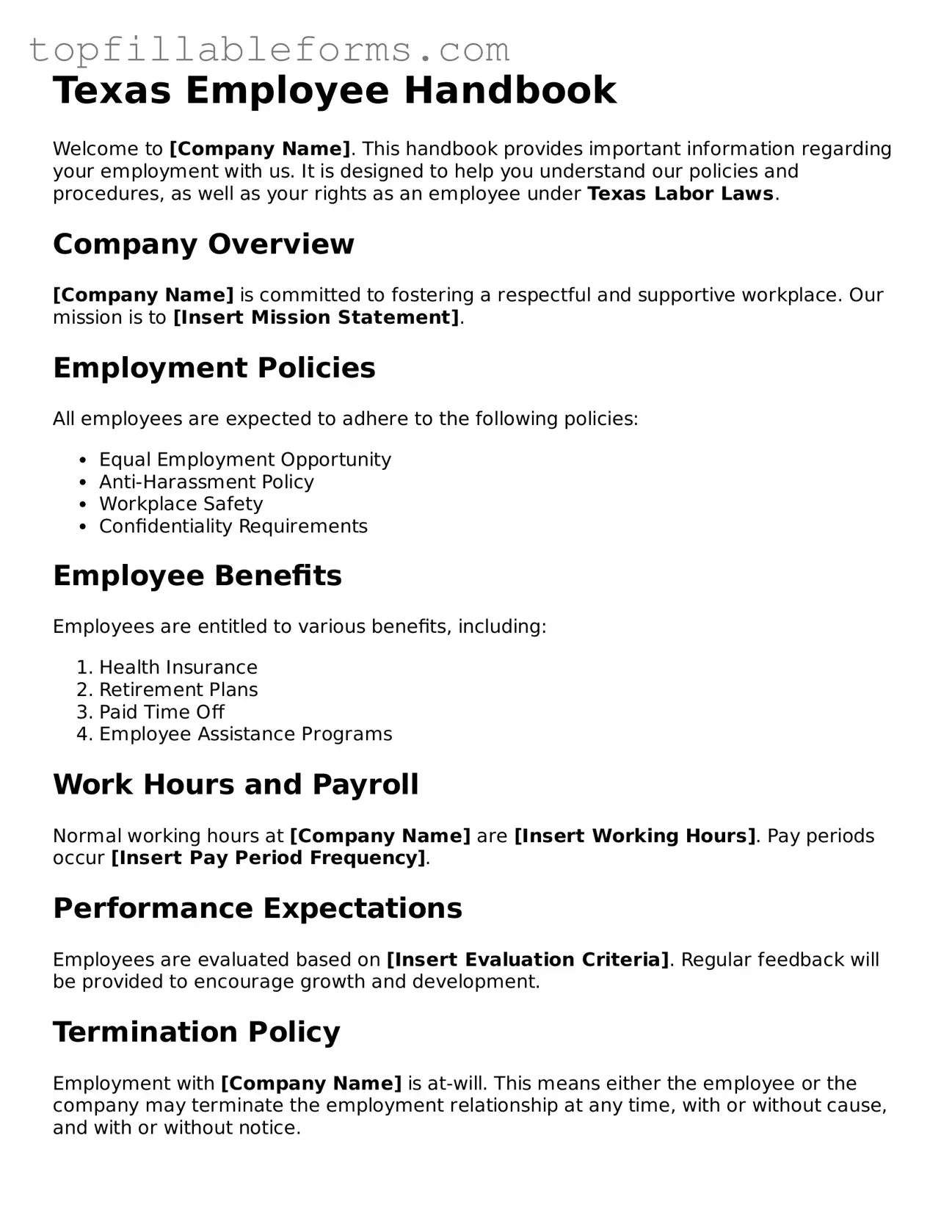Texas Employee Handbook
Welcome to [Company Name]. This handbook provides important information regarding your employment with us. It is designed to help you understand our policies and procedures, as well as your rights as an employee under Texas Labor Laws.
Company Overview
[Company Name] is committed to fostering a respectful and supportive workplace. Our mission is to [Insert Mission Statement].
Employment Policies
All employees are expected to adhere to the following policies:
- Equal Employment Opportunity
- Anti-Harassment Policy
- Workplace Safety
- Confidentiality Requirements
Employee Benefits
Employees are entitled to various benefits, including:
- Health Insurance
- Retirement Plans
- Paid Time Off
- Employee Assistance Programs
Work Hours and Payroll
Normal working hours at [Company Name] are [Insert Working Hours]. Pay periods occur [Insert Pay Period Frequency].
Performance Expectations
Employees are evaluated based on [Insert Evaluation Criteria]. Regular feedback will be provided to encourage growth and development.
Termination Policy
Employment with [Company Name] is at-will. This means either the employee or the company may terminate the employment relationship at any time, with or without cause, and with or without notice.
Health and Safety
The safety of all employees is a priority. Please follow all safety protocols and report any hazardous conditions immediately.
Acknowledgment of Receipt
By signing below, you acknowledge that you have received and understood the Texas Employee Handbook.
Employee Name: [Insert Employee Name]
Employee Signature: ___________________________ Date: ____________
Thank you for being an important part of [Company Name].
